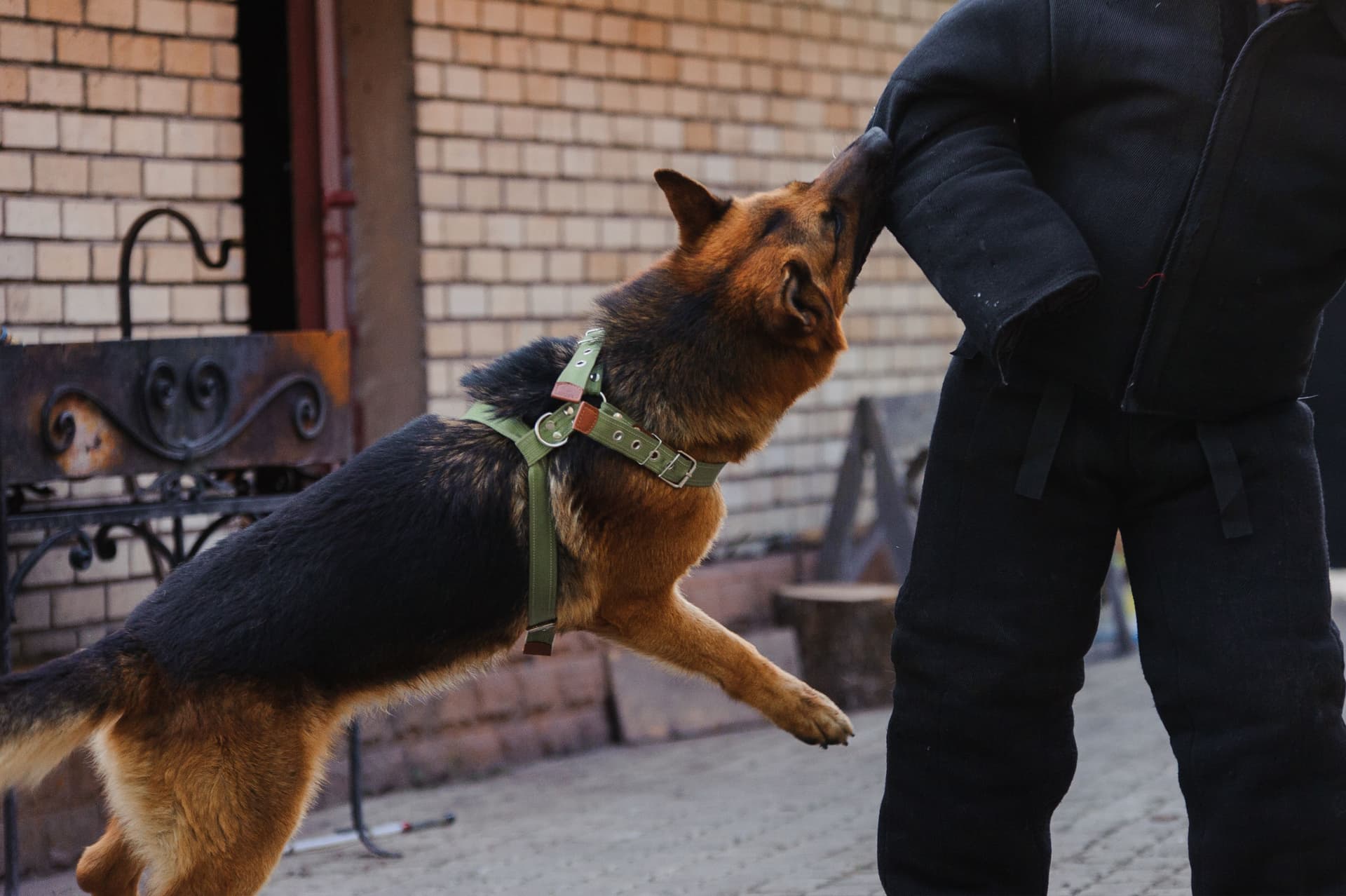
Dog Bite Injuries in Children: Protecting the Most Vulnerable Victims
Learn how GetCompensation.LAW supports families of children injured by dog bites, securing justice and compensation for medical, emotional, and educational needs.
Our Network of Attorneys Are Recognized by the Best
Introduction: The Tragic Reality of Dog Bites in Children
Dog bites are traumatic experiences, but they are particularly devastating when they involve children. Due to their smaller size, limited ability to defend themselves, and natural curiosity, children are at a heightened risk of severe injuries and emotional trauma following a dog bite. At GetCompensation.LAW, we understand the unique challenges that families face when their child is injured by a dog. Our mission is to ensure justice and comprehensive compensation to help families rebuild their lives.
Why Are Children More Vulnerable to Dog Bites?
1. Physical Size and Strength
Children’s smaller stature and weaker physical abilities make it difficult for them to defend themselves during an attack. This often results in injuries to the face, neck, and hands—areas most accessible to a dog.
2. Misinterpretation of Behavior
Dogs may misinterpret a child’s playful actions as a threat or provocation. For example, sudden movements, loud noises, or grabbing a dog’s tail can trigger aggressive reactions.
3. Lack of Awareness
Children, especially younger ones, may not understand how to interact with animals safely. They might approach unfamiliar dogs without caution or ignore warning signs like growling or barking.
4. Accessibility to Dangerous Dogs
Children are often in environments where they encounter dogs, whether at parks, neighbors’ homes, or public spaces. Without proper supervision or restraint, these interactions can quickly turn dangerous.
Common Injuries in Children from Dog Bites
Dog bites in children frequently result in significant physical and emotional harm, including:
1. Facial Injuries
- The height of a child makes their face an easy target for a dog.
- Injuries often require reconstructive or cosmetic surgery, leading to lasting scars.
2. Hand and Arm Injuries
- Children instinctively use their hands and arms to shield themselves, resulting in deep puncture wounds or broken bones.
3. Nerve Damage
- Severe bites can damage nerves, leading to permanent loss of sensation or mobility.
4. Emotional Trauma
- Many children develop post-traumatic stress disorder (PTSD), anxiety, or a fear of dogs following an attack.
5. Infections and Complications
- Dog bites carry a high risk of infection, including rabies, tetanus, and bacterial infections like cellulitis.
The Emotional Impact on Children
While physical injuries heal over time, the emotional wounds caused by a dog bite can persist for years. Common psychological effects include:
1. Post-Traumatic Stress Disorder (PTSD)
- Flashbacks, nightmares, and an overwhelming fear of dogs are common symptoms.
2. Social Anxiety
- Children may feel self-conscious about visible scars, leading to withdrawal from peers and activities.
3. Behavioral Changes
- Aggression, irritability, or a reluctance to leave the safety of home can arise after an attack.
4. Academic Challenges
- Difficulty concentrating or missed school days due to medical appointments and emotional distress can hinder academic performance.
Parental Responsibilities After a Dog Bite Incident
If your child has been bitten by a dog, immediate action is crucial to ensure their physical and emotional well-being. Steps include:
1. Seek Immediate Medical Attention
- Clean the wound thoroughly and seek professional care to prevent infection.
2. Document the Incident
- Take photos of the injuries and the scene of the attack.
- Obtain contact information from the dog’s owner and any witnesses.
3. Report the Incident
- File a report with local animal control authorities to document the attack and assess the dog’s history.
4. Monitor for Emotional Changes
- Watch for signs of trauma, such as sleep disturbances or fear of going outside.
- Consult a child psychologist if emotional issues persist.
5. Contact Legal Representation
- Reach out to GetCompensation.LAW to understand your rights and begin building a case for compensation.
Legal Rights for Children in Dog Bite Cases
Children have the same legal rights as adults to pursue compensation for injuries caused by dog bites. However, the process may involve unique considerations:
1. Liability of the Dog’s Owner
- Most jurisdictions hold dog owners strictly liable for injuries caused by their pets, especially when the victim is a child.
2. Comparative Negligence Exemptions
- Children under a certain age are often exempt from being found partially responsible for provoking the dog.
3. Parental Representation
- Parents or guardians act on behalf of the child to file claims and negotiate settlements.
4. Trust Funds for Settlements
- Compensation awarded to minors may be placed in a trust fund, ensuring the funds are used responsibly for their care and recovery.
Compensation for Dog Bite Injuries in Children
Families may seek various forms of compensation to address the full impact of a dog bite:
1. Medical Expenses
- Emergency care, surgeries, physical therapy, and long-term treatment for scars or disabilities.
2. Pain and Suffering
- Compensation for the physical pain and emotional distress caused by the attack.
3. Psychological Treatment
- Covering counseling and therapy to address trauma and behavioral changes.
4. Educational Support
- Reimbursement for tutoring or academic support needed due to missed school or difficulty concentrating.
5. Parental Lost Wages
- Compensation for parents who miss work to care for their injured child.

How GetCompensation.LAW Supports Families
At GetCompensation.LAW, we recognize the profound impact a dog bite can have on a child and their family. Our dedicated legal team provides comprehensive support, including:
1. Thorough Case Evaluations
- Reviewing the details of the incident to determine liability and potential compensation.
2. Evidence Collection
- Gathering medical records, eyewitness statements, and animal control reports to build a strong case.
3. Partnering with Experts
- Collaborating with child psychologists, medical professionals, and animal behaviorists to substantiate claims.
4. Aggressive Advocacy
- Negotiating with insurance companies or pursuing litigation to secure maximum compensation.
5. Compassionate Guidance
- Offering emotional support and clear communication throughout the legal process.
Preventing Dog Bites in Children
While legal action can provide relief, prevention remains the best approach. Steps parents can take to reduce the risk of dog bites include:
1. Educate Children on Dog Safety
- Teach children to approach dogs cautiously and avoid sudden movements or loud noises.
2. Supervise Interactions
- Always monitor interactions between children and dogs, especially unfamiliar ones.
3. Recognize Warning Signs
- Learn to identify signs of aggression, such as growling, baring teeth, or raised fur.
4. Advocate for Responsible Ownership
- Encourage neighbors and community members to properly train and restrain their dogs.
Case Study: Securing Justice for a Young Victim
One of our recent cases involved a 6-year-old boy who was bitten by a neighbor’s unrestrained dog. The attack resulted in severe facial injuries, requiring multiple surgeries and ongoing therapy. The emotional impact left the child fearful of leaving his home.
Our team at GetCompensation.LAW worked tirelessly to build a strong case, gathering medical documentation, witness testimonies, and expert evaluations. We secured a substantial settlement that covered the boy’s medical expenses, counseling, and future needs, providing the family with the resources to support his recovery.
Take Action Today
If your child has been injured by a dog bite, you don’t have to face this challenge alone. At GetCompensation.LAW, we are committed to fighting for justice and ensuring that your family receives the compensation needed to heal and move forward.
Contact us today for a free consultation, and let us help you protect your child’s future.




